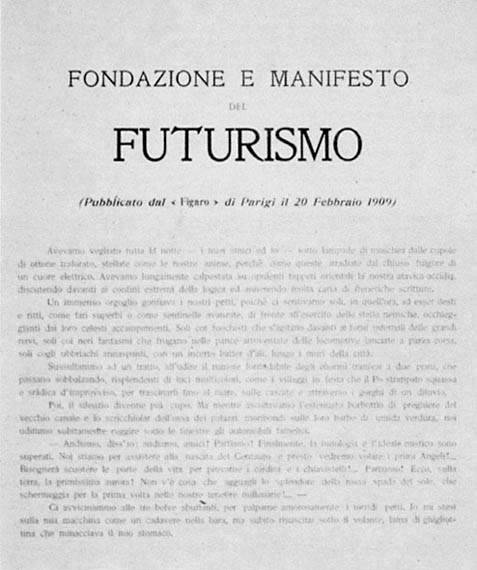“Italian Futurism, 1909-1944: Reconstructing the Universe
The exhibition, “Italian Futurism, 1909-1944: Reconstructing the Universe,” is one of the most important and large Futurist retrospectives that has ever been set up outside of Italy.
The multidisciplinary exhibition, which will open on February 21st and will run until September 1st, examines the historical sweep of the movement from F. T. Marinetti’s first Futurist Manifesto in 1909 to its demise at the end of World War II, encountering as well another movement which developed in 1911: Cubism.
Four years in the making, the show will include almost 400 works by more than 80 artists, taking up nearly the entire museum space.
Ascending the ramps that ring the Museum, visitors will follow the entire movement and its historical evolution: shifting from the fractured spaces of the 1910s to the machine aesthetics (or Arte meccanica) of the ’20s, and then to the softer, lyrical forms of the ’30s. Many of the works have rarely been seen and some of them have never travelled outside Italy.
Since this is the first exhibition of Italian Futurism ever organized in the United States, it is fitting that the Guggenheim has organized a multidisciplinary show that encompasses painting, sculpture, architecture, design, ceramics, fashion, film, photography, advertising, free-form poetry, music, theater, and performance art.
“Italian Futurism, 1909-1944: Reconstructing the Universe” unfolds chronologically and juxtaposes works in different media bringing together many artistic languages and forms of expressions that have distinguished the Futurists and their experiences during the years.“It’s time to re-evaluate and broaden our notion of what avant-garde means,” said curator Vivien Greene.
Greene, the Guggenheim’s 19th- and early-20th-century art specialist, has successfully compiled 375 works from European museums and private collections.
An international committee of eminent scholars from various disciplines provided expertise and guidance in the preparation of this exhibition that explores in deep the Futurist movement, a major modernist expression of which American audiences have known very little.




































i-Italy
Facebook
Google+
This work may not be reproduced, in whole or in part, without prior written permission.
Questo lavoro non può essere riprodotto, in tutto o in parte, senza permesso scritto.